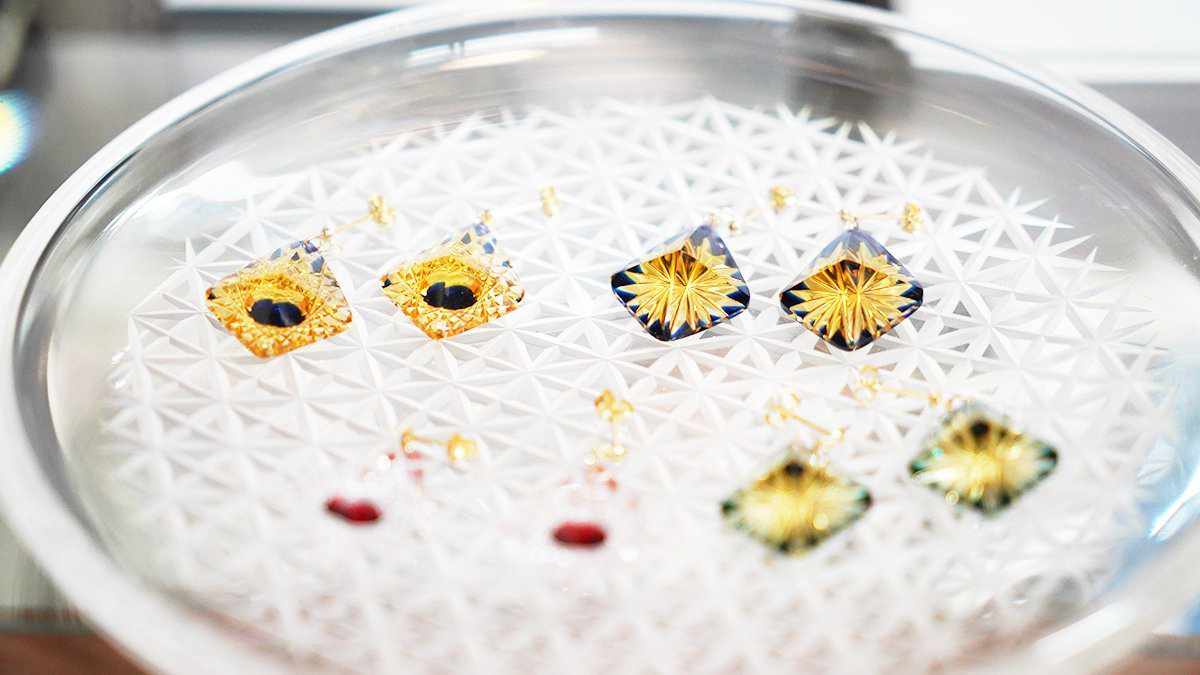free
Description

A necklace made of deep red crystal glass.
This jewelry was developed with the idea of "I want you to feel closer to Edo Kiriko," which has a strong image of glass.
It is an item that plays a leading role in coordination.
It is also recommended as a gift for celebration or as a gift for loved ones.
Please enjoy the elegant brilliance.
Information
| Manufacturer | Kobayashi Glass Kogei |
|---|---|
| Country of origin | Tokyo, Japan |
| Technique | Edo Cut Glass |
| Material | Crystal glass, K10YG (chain) |
| Size | Glass: D: 1.22" * W: 0.55", Chain: 17.71"(硝子部分:縦3.1*横1.4, チェーン:45cm) |
| Weight | 0.01 lbs(4g) |
| Capacity | 0 oz(ml) |
| Electronic Equipment | |
| Note | As it is handmade, the color may differ. |
| Delivery Time | 1-2 weeks (if out of stock + 1-2 weeks) |
Brand history and characteristics
How Japanese Products Can Be Such High Quality
Payment & Security
Your payment information is processed securely. We do not store credit card details nor have access to your credit card information.
![[ACCESSORY] TOKOBA DROP NECKLACE RED CHRYSANTHEMUM TIE | TOKOBA | EDO CUT GLASS[Make to order: approx. 2 months delivery time]](http://en.thebecos.com/cdn/shop/products/pd_tokoba007_4b156be4-3f2e-4a6e-b956-331be79513eb_{width}x.jpg?v=1602633219)
![[ACCESSORY] TOKOBA DROP NECKLACE RED CHRYSANTHEMUM TIE | TOKOBA | EDO CUT GLASS[Make to order: approx. 2 months delivery time]](http://en.thebecos.com/cdn/shop/products/pd_tokoba_0016_141988163_o3_12202b23-7404-4056-9c10-e85dc7fdba20_{width}x.jpg?v=1602633222)
![[ACCESSORY] TOKOBA DROP NECKLACE RED CHRYSANTHEMUM TIE | TOKOBA | EDO CUT GLASS[Make to order: approx. 2 months delivery time]](http://en.thebecos.com/cdn/shop/products/pd_tokoba_0017_141988163_o2_c8439ebb-f3b0-41fe-9ac3-b60e1c42b658_{width}x.jpg?v=1602633225)
![[ACCESSORY] TOKOBA DROP NECKLACE RED CHRYSANTHEMUM TIE | TOKOBA | EDO CUT GLASS[Make to order: approx. 2 months delivery time]](http://en.thebecos.com/cdn/shop/products/pd_tokoba_0018_141988163_o1_ec1ef84c-28b0-4e4c-ae77-f1d796a10caf_{width}x.jpg?v=1602633229)
![[ACCESSORY] TOKOBA DROP NECKLACE RED CHRYSANTHEMUM TIE | TOKOBA | EDO CUT GLASS[Make to order: approx. 2 months delivery time]](http://en.thebecos.com/cdn/shop/products/pd_tokoba007_4b156be4-3f2e-4a6e-b956-331be79513eb_130x.jpg?v=1602633219)
![[ACCESSORY] TOKOBA DROP NECKLACE RED CHRYSANTHEMUM TIE | TOKOBA | EDO CUT GLASS[Make to order: approx. 2 months delivery time]](http://en.thebecos.com/cdn/shop/products/pd_tokoba_0016_141988163_o3_12202b23-7404-4056-9c10-e85dc7fdba20_130x.jpg?v=1602633222)
![[ACCESSORY] TOKOBA DROP NECKLACE RED CHRYSANTHEMUM TIE | TOKOBA | EDO CUT GLASS[Make to order: approx. 2 months delivery time]](http://en.thebecos.com/cdn/shop/products/pd_tokoba_0017_141988163_o2_c8439ebb-f3b0-41fe-9ac3-b60e1c42b658_130x.jpg?v=1602633225)
![[ACCESSORY] TOKOBA DROP NECKLACE RED CHRYSANTHEMUM TIE | TOKOBA | EDO CUT GLASS[Make to order: approx. 2 months delivery time]](http://en.thebecos.com/cdn/shop/products/pd_tokoba_0018_141988163_o1_ec1ef84c-28b0-4e4c-ae77-f1d796a10caf_130x.jpg?v=1602633229)

